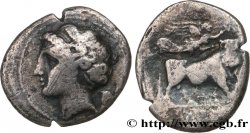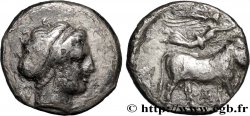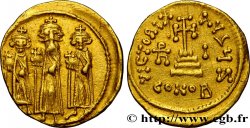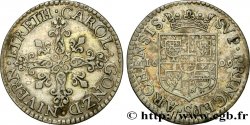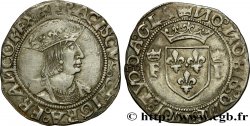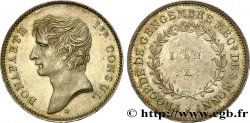bgr_816355 - CAMPANIA - NEAPOLIS Nomos ou didrachme
200.00 €(Approx. 232.00$ | 174.00£)
Quantity
Add to your cart

Type : Nomos ou didrachme
Date: c. 326/317-290 AC.
Mint name / Town : Naples
Metal : silver
Diameter : 18,5 mm
Orientation dies : 1 h.
Weight : 7,08 g.
Coments on the condition:
Monnaie centrée à l’usure importante mais régulière. Portrait agréable. Patine grise
Catalogue references :
Obverse
Obverse description : Tête de la nymphe Parthénopé ou Néapolis à droite, la chevelure bouclée, ceinte d’un bandeau avec collier et boucle d’oreille ; derrière la tête, un osselet.
Obverse legend : [ARTEMI]
Reverse
Reverse description : Taureau androcéphale passant à droite, la tête barbue de face, couronné par Niké volant à droite ; entre les pattes, deux lettres.
Reverse legend : NEOPOLITWN/ QE
Commentary
Pour ce type, A. Sambon signalait déjà en 1903 que le nom au droit sous la tête de la nymphe doit être restitué sous la forme (Artemion ou plutôt Artemidoros). Sur notre exemplaire, le nom sous la tête de la nymphe n’est pas lisible et semble gravé en creux. Le visage présente une attitude altière avec une chevelure très ornementée qui n’est pas sans rappeler les représentations syracusaines. C’est l’un des types les plus courants du monnayage napolitain. Au droit, derrière la tête de la nymphe, nous avons la représentation d’un osselet ou astragale qui servait dans des jeux de hasard et d’adresse. Les osselets étaient en os ou en bronze et sont souvent figurés dans l’art grec (cités par Pline l’Ancien dans son Histoire Naturelle, HN. XXIV, 19,2).
For this type, A. Sambon already pointed out in 1903 that the name on the right under the head of the nymph must be restored in the form (Artemion or rather Artemidoros). On our example, the name under the head of the nymph is not legible and seems engraved intaglio. The face presents a haughty attitude with very ornamented hair which is reminiscent of Syracuse representations. It is one of the most common types of Neapolitan coinage. On the right, behind the head of the nymph, we have the representation of a knucklebone or astragalus which was used in games of chance and skill. The knucklebones were made of bone or bronze and are often figured in Greek art (cited by Pliny the Elder in his Natural History, HN. XXIV, 19.2)
For this type, A. Sambon already pointed out in 1903 that the name on the right under the head of the nymph must be restored in the form (Artemion or rather Artemidoros). On our example, the name under the head of the nymph is not legible and seems engraved intaglio. The face presents a haughty attitude with very ornamented hair which is reminiscent of Syracuse representations. It is one of the most common types of Neapolitan coinage. On the right, behind the head of the nymph, we have the representation of a knucklebone or astragalus which was used in games of chance and skill. The knucklebones were made of bone or bronze and are often figured in Greek art (cited by Pliny the Elder in his Natural History, HN. XXIV, 19.2)







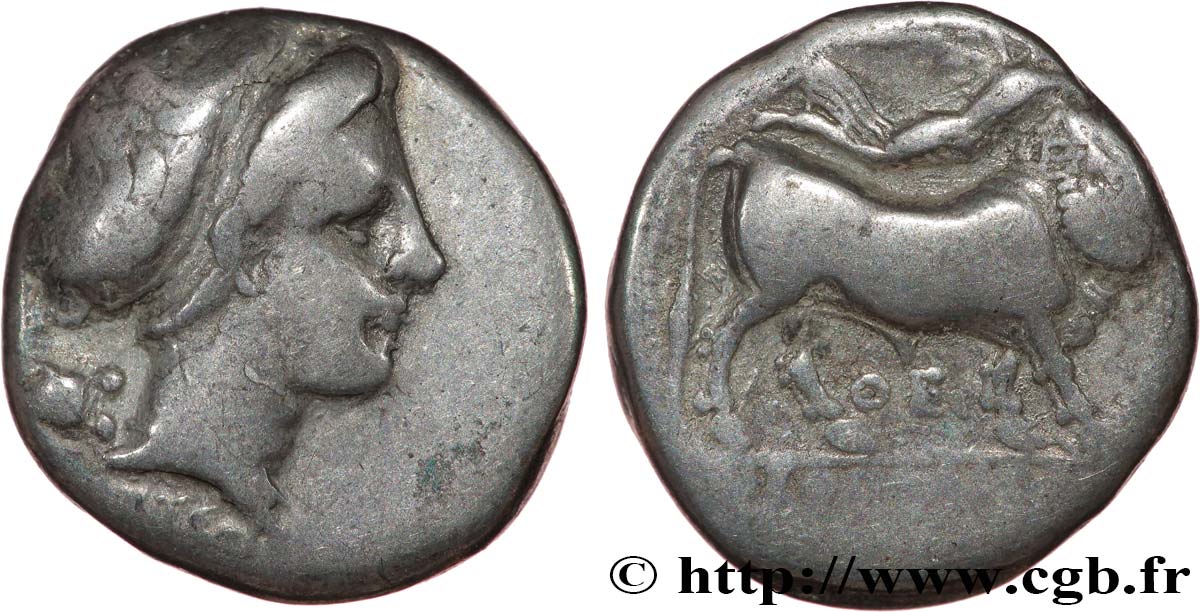
 Report a mistake
Report a mistake Print the page
Print the page Share my selection
Share my selection Ask a question
Ask a question Consign / sell
Consign / sell
 Full data
Full data


